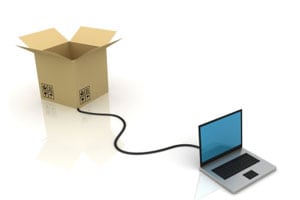 One of the most important aspects of your OMS selection process is getting a demo of the vendor’s application. There are a couple of different approaches to demos, depending on where you are in the system selection process.
One of the most important aspects of your OMS selection process is getting a demo of the vendor’s application. There are a couple of different approaches to demos, depending on where you are in the system selection process.
One type of demo is used to get the general feel for a system early in the search process and lasts one to two hours. What you should get is a high-level overview of a few of the system’s functions.
The second type of demo is used with the short list of vendors to see all the functionality and make a final selection. These detail demos require much more preparation by your company and the vendor. Typically it takes 8-12 hours to see the comprehensive functionality. This also allows time to validate the vendor responses to the RFP.
Sadly, companies are making major system purchases without the detailed due diligence required, and think a couple hours’ review will allow them to make a final judgment on a system.
I always tell clients the job of the salesman is to show you the strengths of the OMS they sell. Your job is to make sure you choose a system that best fits your business at a detail level. In working with clients on hundreds of OMS and WMS projects, we’ve found the most effective practice is to literally script the demo of what you want the vendor to demonstrate with your data, using it to validate their critical RFP responses.
Here are some guidelines for writing and managing scripted system vendor demos:
- Start with your user requirements. What essential functions do you need? Which are unique to your business? These may be loyalty clubs, discounting, carrier rate shopping, bill me later, product numbering schemes, etc.
- Have key department users prepare a list of specific items they want demonstrated in order to validate critical functionality (e.g., promotion setup, blanket purchase orders, item master, quantity price break discounts, etc.).
- Make sure the vendor has your media (catalogs, inserts, URLs, etc.) and uses data you’ve prepared to demo their system. Examples include dummied-up customer records, products and SKUs, different discount options, kitting/de-kitting, product numbering and length of fields (e.g., name, address, SKU). Seeing your data and the way the system handles it is key.
- Write out a literal script and a time agenda, including the order of topics to be demoed. Conducting the demos in the same way and following the same sequence gives you an apples-apples system comparison. If it’s up to each vendor, it will be difficult to compare and major functions are missed. This is a major reason for taking control of the demo. You should recognize that of course each vendor has its own agenda—ask for it in advance, review it, and only use that portion that benefits the demo. These vendors are already on the short list. Use separate web meetings away from the demo to discuss other topics.
- Assign a scribe to document the key pluses and minuses of each OMS as well as vendor follow-up items. Department users should keep track of any changes, follow-up items, or features/functions that appear to be a strength or weakness. Don’t rely on the vendor to take the notes.
- Use the demo to validate the vendor responses in the RFP. You should go through any major requirements that you questioned or didn’t understand.
- Update the RFP response with any changes or new impressions based on the demo.
- After the vendor leaves, get the participants together to score their impressions on each functional area, A through F, and develop a consensus. For what functions do key users need more explanation? What are their concerns?
- Follow up with a memo to vendors of items they agreed to research and include any outstanding concerns and questions. Some questions may require an additional demonstration of a specific functionality. This should be easily accommodated by the vendors through a web meeting.
Acquiring a new system is a major commitment of time and money. Spend the time to do the due diligence at a detail level. The better prepared you are and the more firmly you take control of the demo, the better you can ensure the OMS fits your business.
Curt Barry is president of F. Curtis Barry & Company
